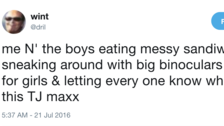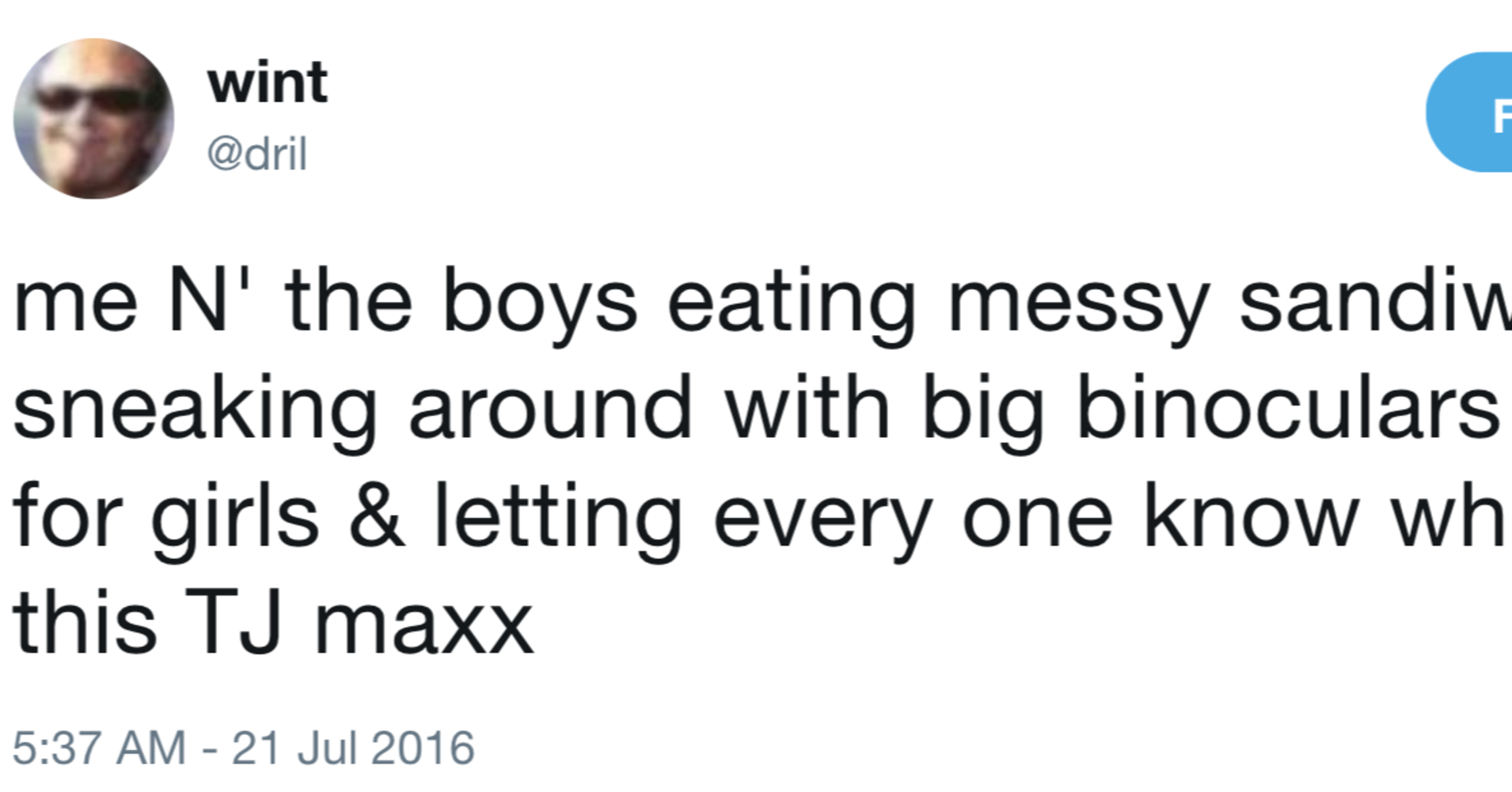[ad_1]

I have not read dril’s book. I cannot read dril’s book.
Dril Official “Mr. Ten Years” Anniversary Collection compiles 1,500 of the pseudonymous Twitter user’s greatest tweets, and it is simply too funny for me to read for more than a page or two at a time without laughing so hard, I feel physically ill. Ask my family if you don’t believe me. Ask the patrons of the West Babylon Public Library, who have been shooting me dirty looks since I began writing this essay. Every time I crack the book open, I’m seconds away from hitting something like this …
… and that’s it. Show’s over. “Goodnight Irene,” as Gorilla Monsoon would say. (“I will suplex that beast.”)
Dril’s blend of fist-on-the-table bluster, abject confusion and burned-toast syntax — the style of humor he pioneered, which became the lingua franca of Funny/Weird Twitter in toto — has my number. Like Monty Python’s run-on sketches, non sequiturs and Terry Gilliam animation; like the endless awkward pauses, omnipresent electrical humming and recycled animation of “Space Ghost Coast to Coast”; like Tim and Eric’s garish colors, glitchy video and non-actor stars, dril’s tweets are a new way to be funny, with a rhythm and vocabulary all their own. I love it.
But dril? Dril loves the boys.
A recurring collective character in dril’s oeuvre, the boys occupy a unique place in his taxonomy, which, thanks to the book’s arrangement of tweets by topic, is easier than ever to get the hang of. For example, girls are mysterious sources of intermingled awe and terror, like the monoliths in “2001.”
Brands are icons of integrity, as admirable as they are untouchable.
The trolls are contemptible pests, an implacable obstacle.
And then there’s rival Twitter user @DigimonOtis, a class by himself: He is nemesis, the anti-dril.
But the boys are on dril’s level. The boys welcome dril with open arms. They share his hopes and fears, his loves and hates. He’s one of the boys.
Crucial to the boys’ appeal is their exclusivity. Like any clique, they’ve invested their aesthetic preferences with moral weight, and those who violate them do so at their peril.
Dril may be a member in good standing, but membership brings responsibilities as well as privileges.
If the boys function as dril’s superego, instilling and policing values, they are also his id — an embodiment of his most voracious physical drives.
The comedy and tragedy of dril is that he is a man without ego, the mediating force that balances the needs of id and superego. He is perpetually out of balance, careening from excess to shame. He requires the intervention of the boys, the example they set, just to function.
This is why the saga of dril and the boys is a love story — conditional and occasionally unrequited though that love may be. It is poignant because it is impossible to imagine dril living without them any more than Juliet could live without Romeo.
When the lovers are in harmony — when the needs of id, ego and superego are aligned at last — the result is a thing of beauty.
The boys can be peers, contributing to the good posts for which dril is best known at a level beyond dril’s own imagining.
Together they can be silent guardians, watchful protectors, dark knights, defending boys both within and outside the circle from the depredations of rival groups.
Not every tweet about the boys made it into the book. This is fitting, as when they’re operating at full force, nothing can contain them.
So we come to the crux of the matter. Dril and the boys are the great love story of our time because their insecurities, their mania, are our time’s prime motivators.
Dril and the boys wallow in the same miasma from which all our era’s reactionary movements have emerged — the MAGAs and Pepes, MRAs and incels, GamerGaters and ComicsGaters, Sad Puppies and Proud Boys and all the other doofuses with unwittingly infantilizing sobriquets.
With “the boys,” the humorist behind dril has tapped into the overall vibe in this country that there exists, somewhere out there ― perhaps in a TJ Maxx ― a lost masculine ideal. No one agrees on what it is, least of all dril, whose psyche is as piecemeal as his punctuation. It could be yelling at NFL protesters to stand for the national anthem or screaming at Disney for committing white genocide in the “Star Wars” films. It could be having sex all the time or having no sex at all. It could be respecting the majesty of the law or flouting it or both, depending on whom the law is meant to penalize. It’s the nightmare superego-id hybrid, 10 pounds of Blue Lives Matter shit in a five-pound “Live free or die” bag.
When men fail to live up to the puritanical amorality of the boys, they’re less than men, which is to say — as women have a lifetime to learn — they’re less than human. Such men earn sexualized insults like “betas” and “cucks.” They’re reduced to contemptuous acronyms like “SJWs” and “NPCs.” They make the soy face. They listen to dad rock. This blend of macho aggression and childlike vulnerability cannot be resolved in the real world, where it results in a racist, revanchist, minority party controlling all branches of government and installing sexual predators in every available position of power yet still acting like the David to the Goliath of Me Too, female gamers and the theoretical casting of Idris Elba as James Bond.
Dril and the boys reside in this all-American astral plane where the Large Son–Libtard civil war rages, where misandry is real and must be guarded against with magic spells. We recognize our own reality in their incoherent but nevertheless militant search for reasons to hoot and holler. As such, their romance presents us with an opportunity to convert the problematic into the pleasurable, just as surely as antihero dramas or even halfway decent kink.
In the world of dril and the boys, all the pride and greed and wrath and lust and envy and sloth and gluttony of the movements that have fouled the entire adult lives of multiple generations of Americans can be boiled down to a gaggle of morons screaming about toilets. It’s a beautiful fantasy, and like all fantasies, it’s as romantic as it is remote.
Sean T. Collins has written for The New York Times, Rolling Stone, Pitchfork, Esquire and Vulture. He and his partner, the cartoonist Julia Gfrörer, are the co-editors of the art and comics anthology Mirror Mirror II. They live with their children on Long Island in New York.
[ad_2]
Source link

